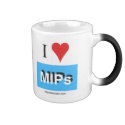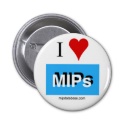|
|
Reference type: Journal
Authors: Kadhirvel P, Machado C, Freitas A, Oliveira T, Dias RCS, Costa MRPF
Article Title: Molecular imprinting in hydrogels using reversible addition-fragmentation chain transfer polymerization and continuous flow micro-reactor.
Publication date: 2015
Journal: Journal of Chemical Technology & Biotechnology
Volume: 90
Issue: (9)
Page numbers: 1552-1564.
DOI: 10.1002/jctb.4681
Abstract: BACKGROUND Stimuli responsive imprinted hydrogel micro-particles were prepared using reversible addition-fragmentation chain transfer polymerization for targeting genotoxic impurity aminopyridine in aqueous environment using a continuous flow micro-reactor. RESULTS The feasibility of operation with a continuous flow micro-reactor for particles production was demonstrated. A comparative evaluation was carried out between batch and micro-reactor produced imprinted and non-imprinted hydrogels. Experimental results proved that molecular imprints generated by free radical polymerization and controlled radical polymerization showed outstanding performance in adsorption behavior: the q value estimate was about 1000 times higher than the value presented by other researchers. Solid phase extraction results further evidenced the promising imprinting with hydrogels using free radical polymerization and controlled radical polymerization by retaining c. 100% of 3-aminopyridine. The imprinting factor of 4.3 presented in this research appears to be the best value shown so far. CONCLUSION The imprinted materials were successfully prepared both in batch and with a continuous flow micro-reactor. The inclusion of a reversible addition-fragmentation chain transfer agent in controlled radical polymerization was important in optimizing the experimental conditions in the continuous microfluidic approach. Though the reversible addition-fragmentation chain transfer agent was very useful in controlling the reaction kinetics, imprinted micro-particles showed the existence of both non-specific and imprinted sites. It is worth extending this work to demonstrate the impact of reversible addition-fragmentation chain transfer agents in molecular imprinting, considering also operation in a continuous flow micro-reactor to obtain tailored smart hydrogel particles. © 2015 Society of Chemical Industry
Template and target information: 3-aminopyridine
Author keywords: 3-aminopyridine, smart hydrogel, micro-reactor, molecular imprinting, reversible addition-fragmentation chain transfer, frontal analysis
|


 Element 67 tie - Holmium Ho Ho Ho!
Element 67 tie - Holmium Ho Ho Ho!







 I love MIPs 3 thermal morphing mug
I love MIPs 3 thermal morphing mug







 I Love MIPs button or badge mipdatabase logo
I Love MIPs button or badge mipdatabase logo






